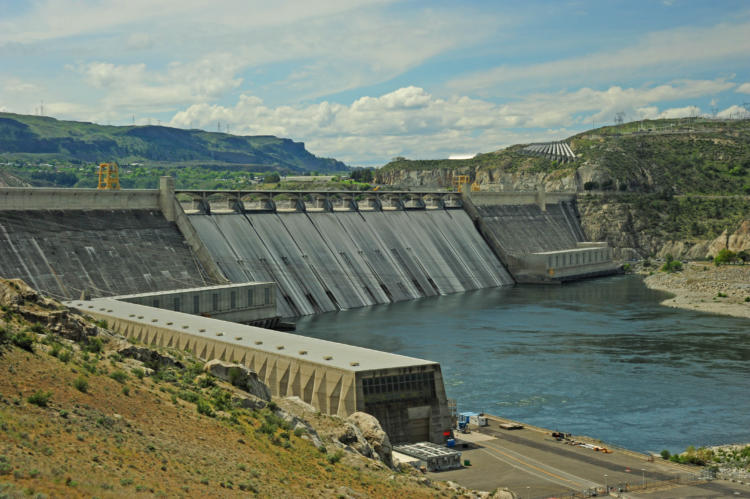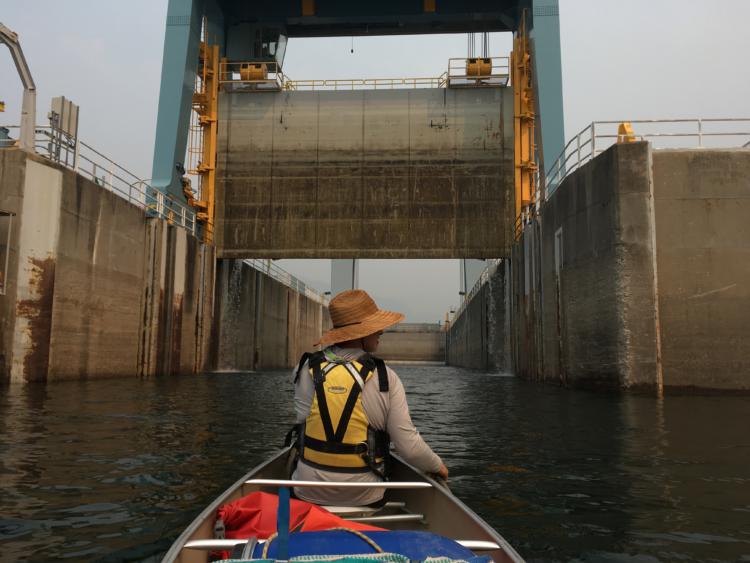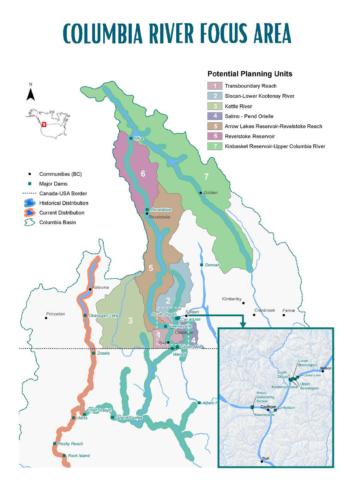Just over 177 years ago, on a Monday in June 1846, British and American officials met in Washington DC to sign the Treaty of Oregon. With the stroke of their pens, they extended the border between the United States and what was then British North America along the straight line 49th parallel from the Rocky Mountains to the Pacific Ocean. This legal act by people with no connection to the region split the Columbia River watershed in two, ignoring the Indigenous people and the animals who enjoyed it as the unbroken landscape of their ancestors.
The splitting of the watershed set the stage for many of the developments that have come since. Notably, in 1934, the U.S. sent the Canadian government a letter asking if Canada would object to the building of Grand Coulee Dam without passage for migrating salmon. Canada wrote back to say that its interests would not be affected; another display of indifference to Indigenous people on both sides of the boundary. So, the completion of Grand Coulee Dam (and later Chief Joseph Dam downstream) without passage sealed off the rich upper Columbia from this iconic fish that once swam from the ocean all the way to Columbia Lake.
Last Thursday, political leaders once again gathered in Washington D.C. to make an agreement between sovereign nations, this time aimed at reunification instead of division. In exchange for a 20 year pause to litigation, the U.S. federal government will fully fund upper Columbia River salmon reintroduction efforts led by the Colville, Spokane and Coeur d’Alene tribes through a 20-year, $200+ million USD agreement.
“In 1940, Tribes from around the Northwest gathered at Kettle Falls for a Ceremony of Tears to mourn the loss of salmon at their ancestral fishing grounds. Today the federal government is taking a major step toward righting that historic wrong by committing to support the Tribally led, science-driven reintroduction of salmon above Chief Joseph and Grand Coulee dams,” said Confederated Tribes of the Colville Reservation Chairman Jarred-Michael Erickson. “Together as partners, we will bring salmon back where they belong – to the waters of the Upper Columbia. The Colville Tribes look forward to our children celebrating a Ceremony of Joy when salmon are permanently restored to their ancestral waters.”
Chairman Erickson’s message was echoed by leaders from the Spokane and Coeur d’Alene tribes as well as leaders for several federal government agencies involved in the agreement.
Upper Columbia United Tribes (UCUT), an inter-tribal organization based in Spokane, Washington that coordinates work between the individual tribes involved in this agreement, is currently engaged in Phase 2 of its salmon reintroduction plan, which centres around studies to assess the feasibility of reintroduction options. If feasibility is confirmed, UCUT will advance to Phase 3, which includes the construction of permanent downstream passage for juvenile salmon heading out to the ocean and upstream passage for adult salmon returning to spawn at Chief Joseph and Grand Coulee Dams as well as habitat improvement upstream of these dams.

This announcement opens an exciting new chapter, including for Canada. In 2019, the Province of B.C. and the Government of Canada joined Bringing the Salmon Home, a parallel effort led by Indigenous nations north of the Canada-U.S. border.
Though much smaller in scale than the recently announced American collaboration, funding from the provincial and federal governments as well as the Columbia Basin Trust has empowered the Ktunaxa, Secwépemc, and Syilx Okanagan Nations to advance similar research in Canada. Salmon reintroduction is also being considered in ongoing negotiations to modernize the Columbia River Treaty, alongside other ecosystem restoration priorities such as resident fish and the potential revegetation of reservoir drawdown zones.

But last week’s announcement is especially exciting thanks to work by Indigenous nations that goes back much further than 2019. More than 20 years ago, Indigenous nations fought to secure legally-binding commitments for the installation of fish passage at two key Canadian dams north of the border — if the salmon make it back home. That day is coming.
Building passage facilities at these dams (Hugh Keenleyside and Brilliant) would allow salmon to return up the Columbia River as far as Revelstoke and up their full historic range into the Kootenay River and the Slocan Valley. There is also some supportive (but not legally-binding) language that applies to Waneta Dam which blocks salmon’s path up the Pend Oreille River towards the Salmo (originally called the Salmon River). This means that if U.S. efforts to bring salmon back are successful, we could see salmon swimming across the border and returning to large areas of their historic range in BC.

After Hugh Keenleyside, only two more dams (Revelstoke and Mica) block salmon from once again making the full 2,000 kilometre journey between the sea and the Columbia’s headwaters in Canal Flats. Admittedly, these last two dams are some of the biggest on the river. Climate change and downstream river temperatures in the lower Columbia River also present increasing threats to migrating salmon. In spite of these challenges, Indigenous communities are steadfast in their resolve to continue.
As Ktunaxa Nation Council biologist Misun Kang underscored at a recent event hosted by the Bringing the Salmon Home Initiative, “[this] will necessarily continue for generations. This is an issue that’s been ongoing for more than eighty years in Canada and longer in the U.S. and requires multi-generational sustaining commitment to continue.”
At Wildsight, we applaud the many nations and tribes on both sides of the border who show us all what it means to both believe in something and to work tirelessly to make that dream come true. Multi-generational commitment, not only to salmon but to all living things, is what we need to navigate the perilous and promising future ahead. Salmon reintroduction is an ideal opportunity for our society to strengthen this muscle.
Wildsight’s work on salmon reintroduction and other Columbia River watershed issues is largely focused on educating young people, so they are ready to carry today’s important work forward over decades to come. To learn more, read about our Columbia River Field School, Teach the Columbia and Columbia River Conversations programs.
For more incredible youth work, check out the Ktunaxa, Secwépemc, and Syilx Okanagan Nations’ Salmon Warriors Youth Gatherings.








